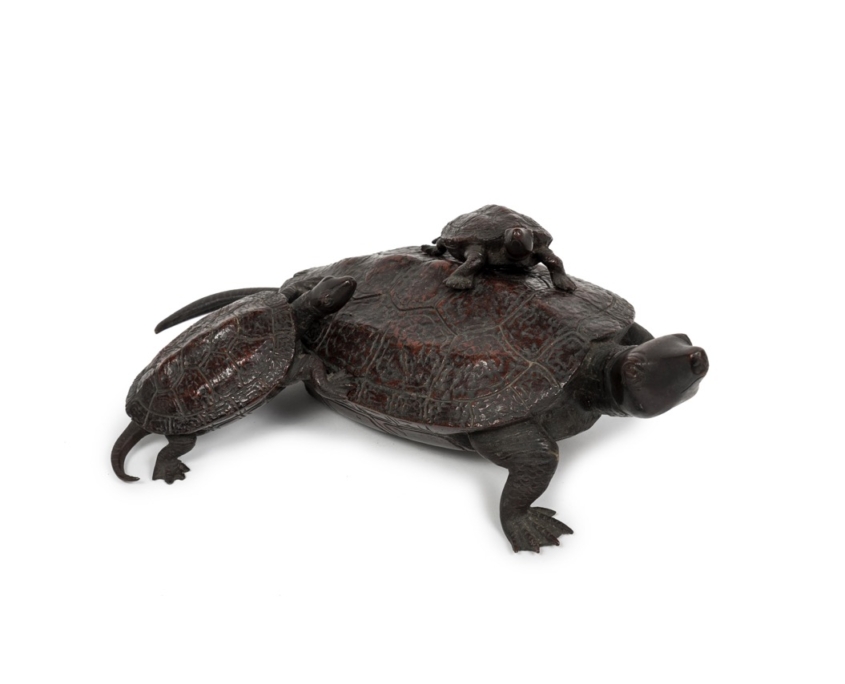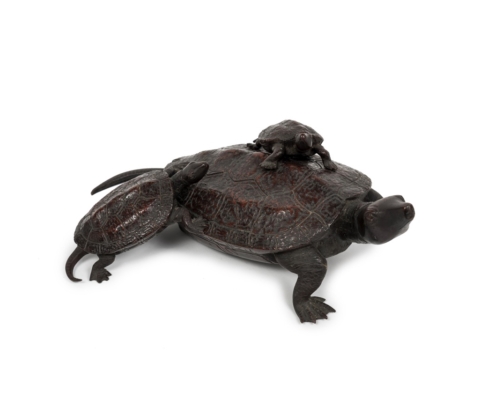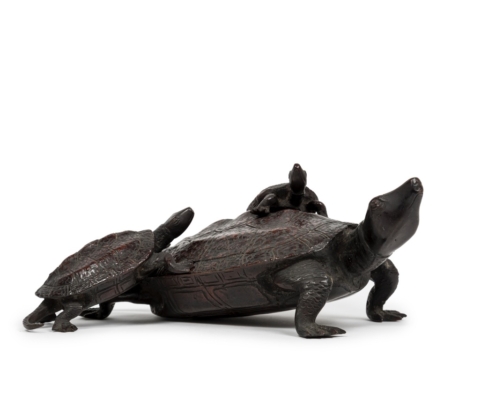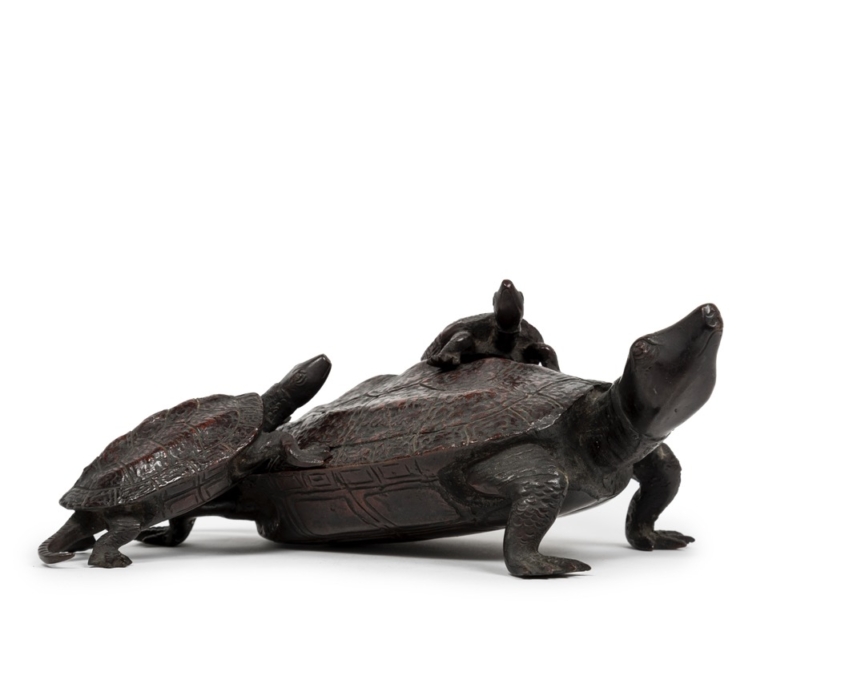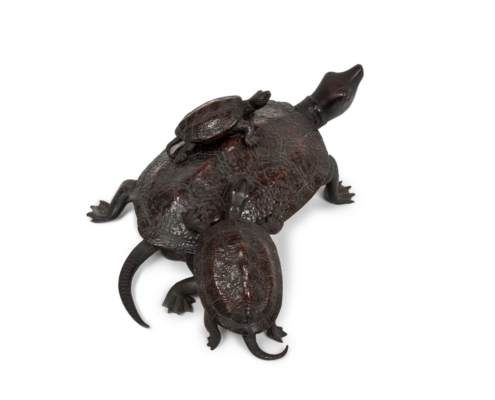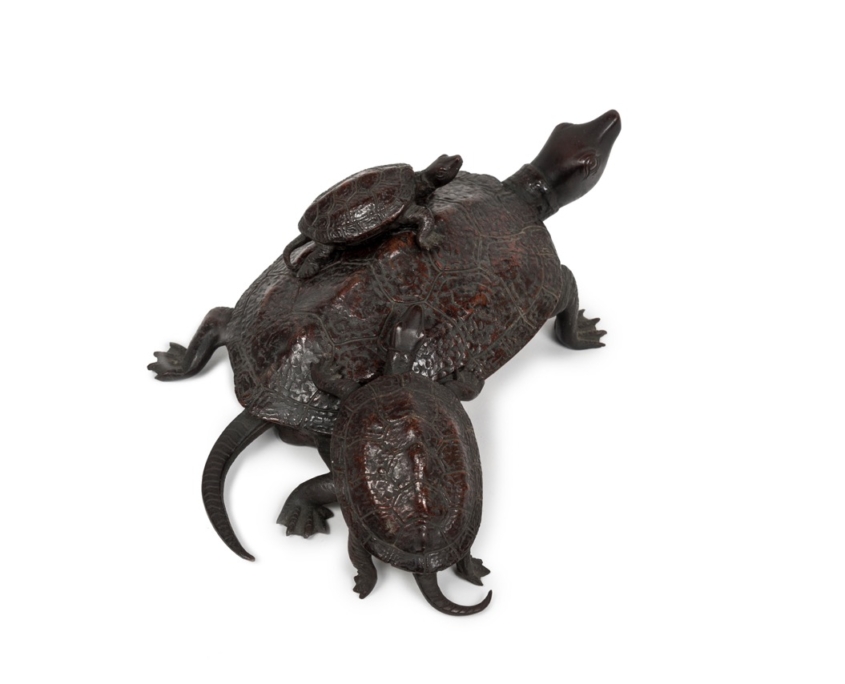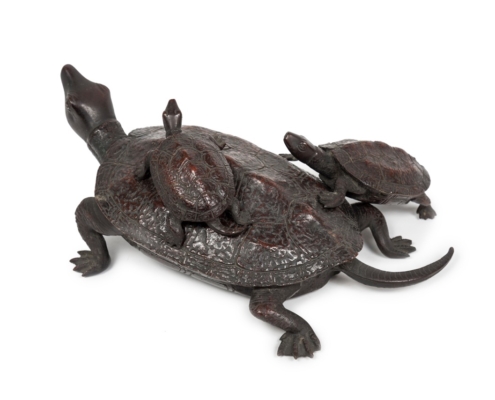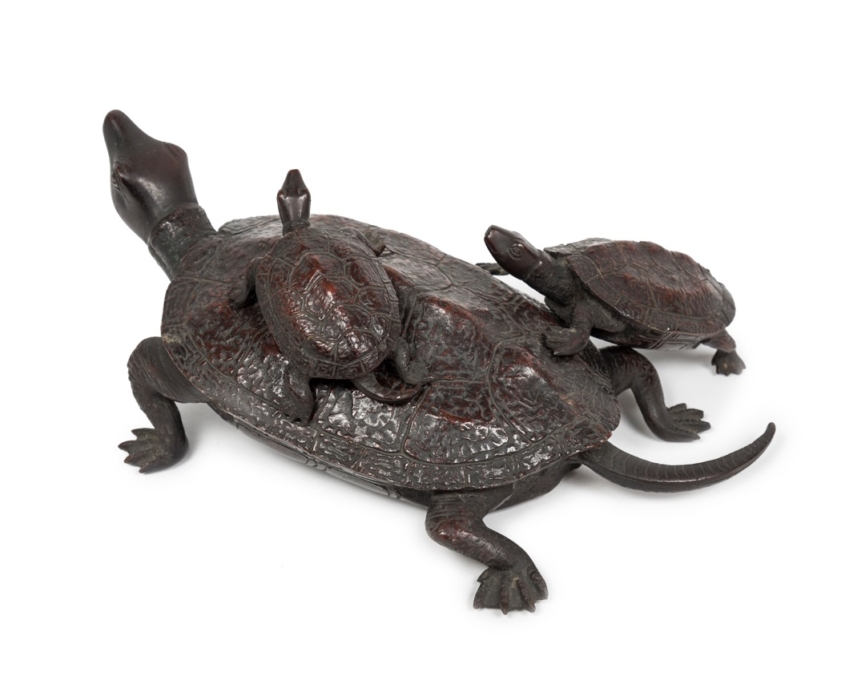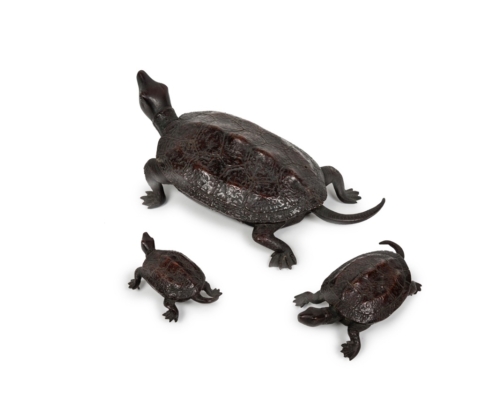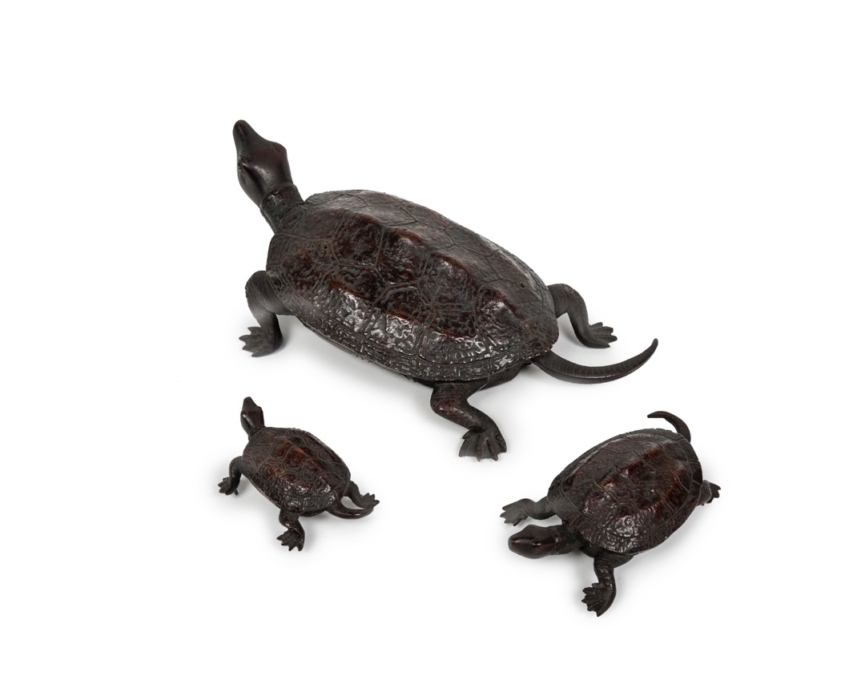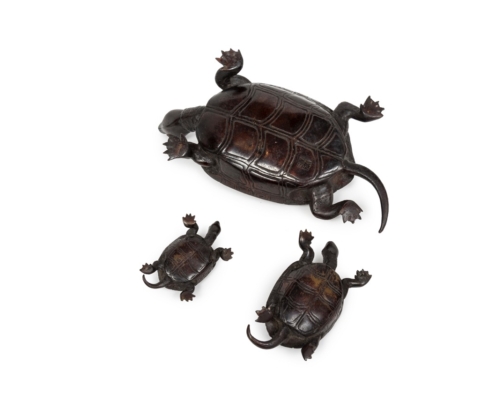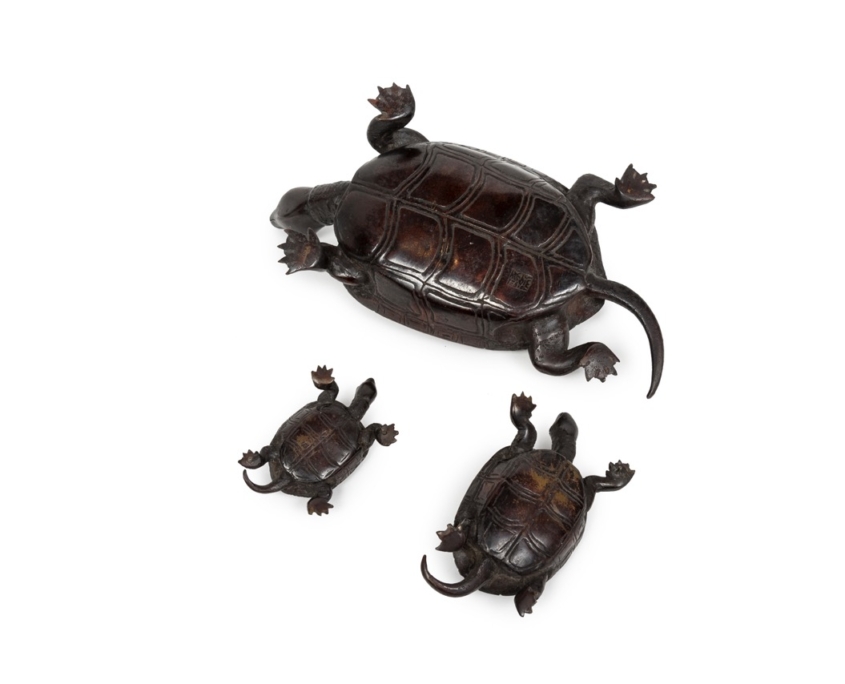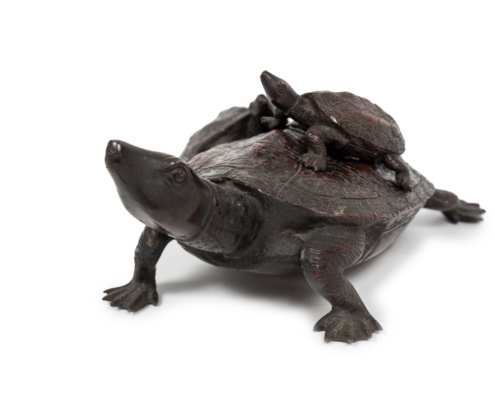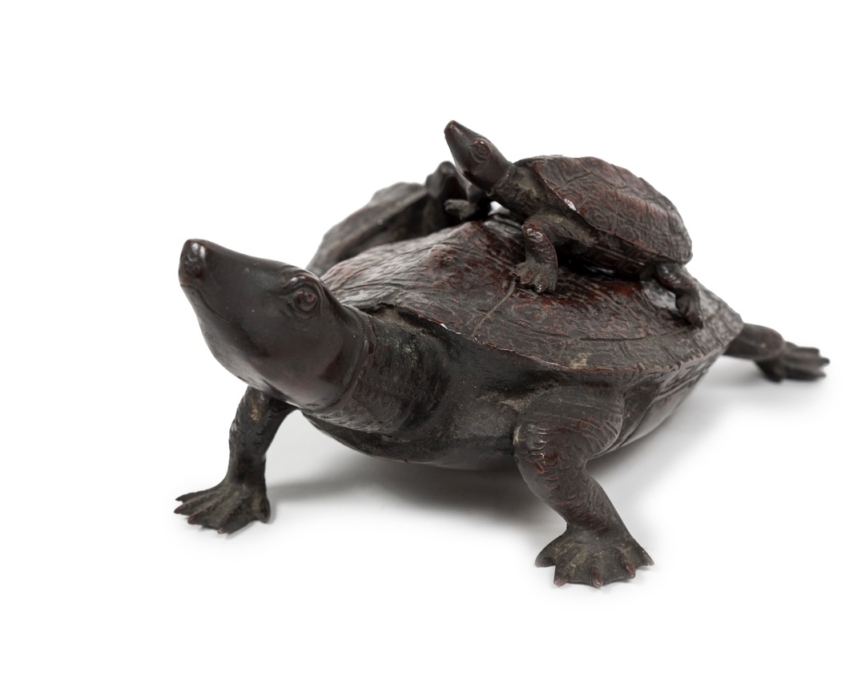BRONZE TURTLES GROUP, HONMA TAKUSAI – MEIJI
Reference: 2023-1167
Group of three turtles in bronze with dark brown patina. They are detachable, the two smaller ones being attached to the larger one by rods.
In Japan, the turltle (kame) is a symbol of longevity. An auspicious animal, it is believed to bring ten thousand years of happiness.
Signed Takusai (琢斎) on the inner shell of the largest turtle. Honma Takusai (本間琢斎) have been foundrymen for six generations.
Japan – Meiji era (1868-1912), Honma Takusai
Large turtle: width 5.5 in (14.5 cm) – depth 10.6 in (27 cm) – height 3.9 in (10.4 cm)
Medium turtle: width 3.1 (8.3 cm) – depth 5.5 (14 cm) – height 1.2 in (3.5 cm)
Small turtle: width 2.7 in (6.5 cm) – depth 3.9 in (10 cm) – height 1.2 in (3.4 cm)




